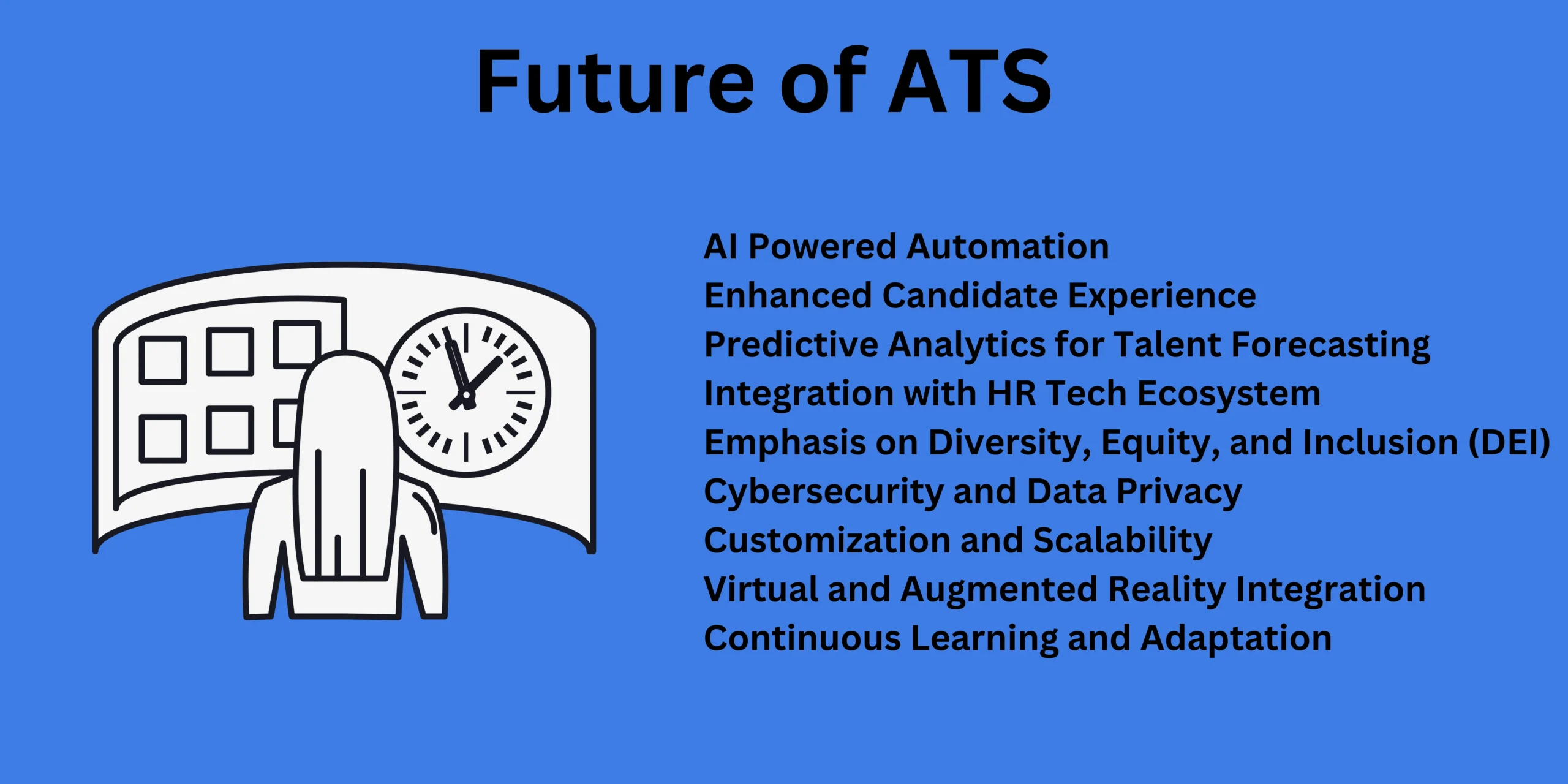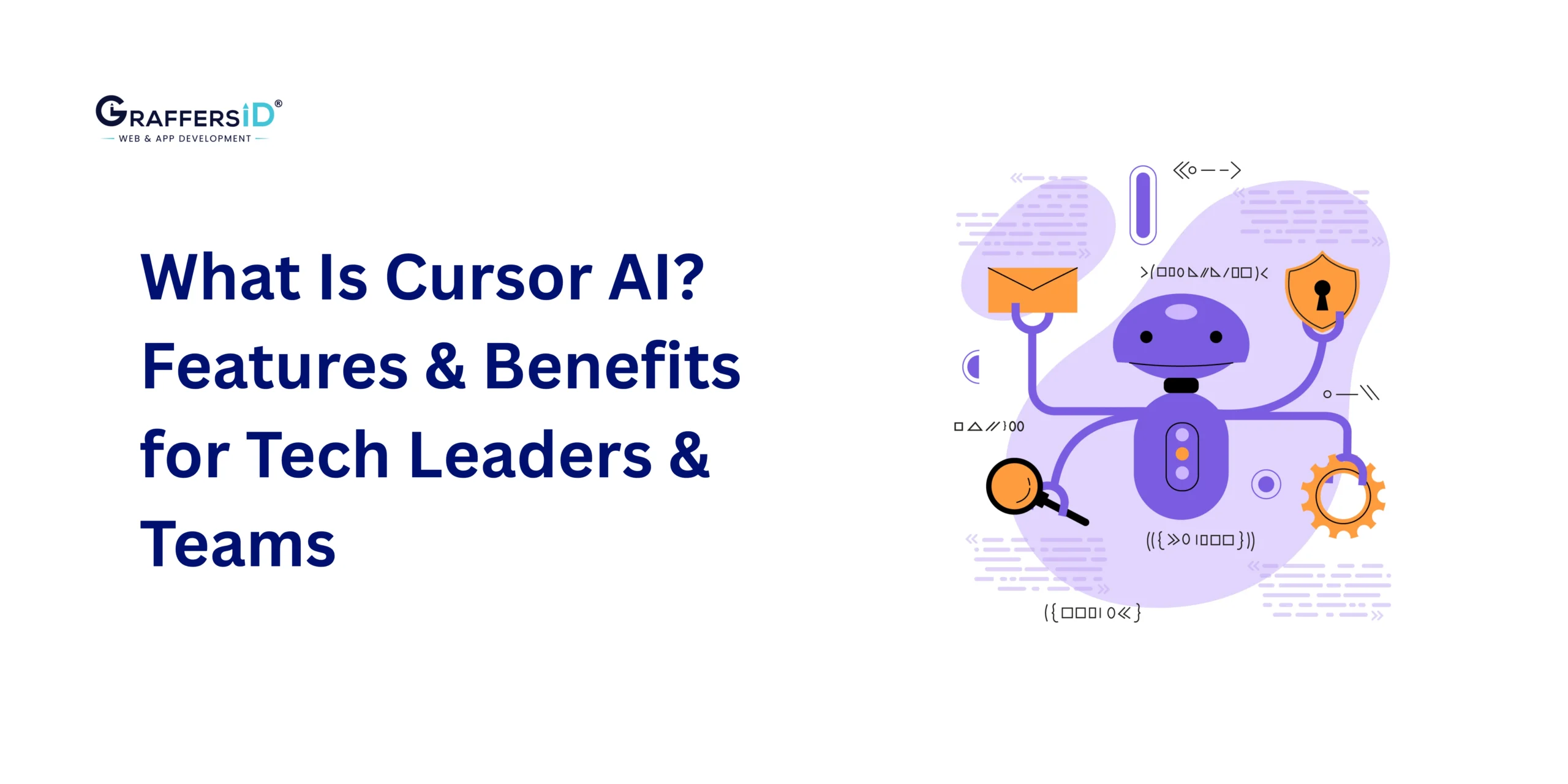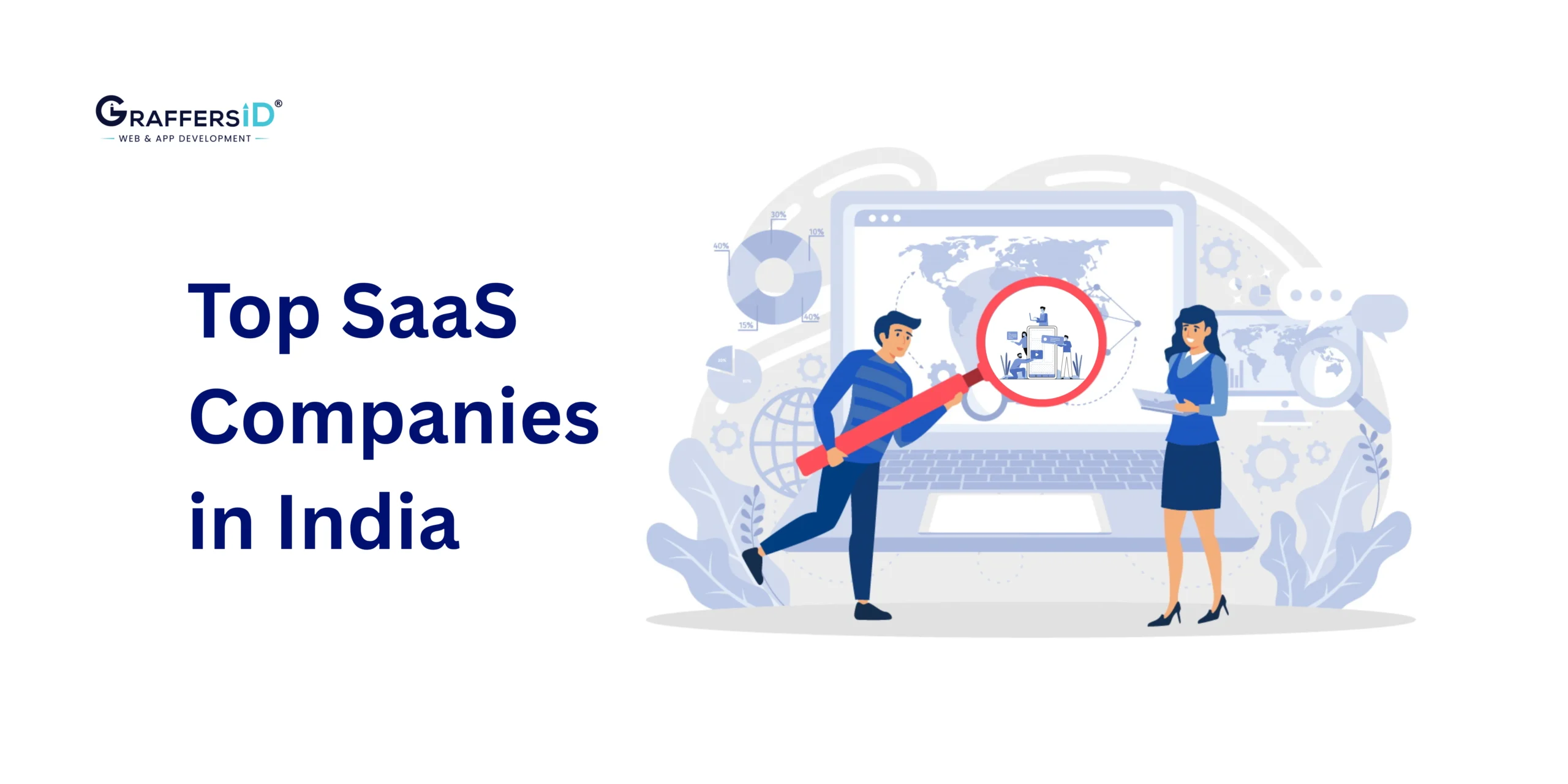In the fast-paced world of recruitment and talent acquisition, Applicant Tracking Systems (ATS) have emerged as indispensable tools for HR professionals and hiring managers. These systems streamline the hiring process, from receiving applications to onboarding new employees. As we delve into 2025, let’s explore the evolving landscape of ATS and what the future of applicant tracking systems holds for these pivotal systems.
What Are Applicant Tracking Systems?
Applicant Tracking Systems, commonly known as ATS, are software applications designed to automate the recruitment and hiring process. They manage job postings, track applicants, and facilitate communication between hiring teams and candidates. Over the years, ATS has evolved from basic resume storage systems to sophisticated platforms incorporating AI and data analytics.
Understanding the Core Functions of an ATS:
Resume Parsing:
ATS begins its journey by parsing resumes. This involves extracting crucial information like contact details, work experience, education, skills, and qualifications from candidate resumes. Advanced ATS can also interpret unstructured data and categorize it accurately.
Database Management:
Once parsed, the data from resumes is stored in a structured format within the ATS database. This centralized repository allows recruiters to access candidate information quickly and efficiently, enabling faster decision-making.
Job Posting and Advertisement:
When a new job opening is created, the ATS facilitates the posting of job advertisements across various platforms like company websites, job boards, and social media channels. This ensures maximum visibility and attracts a diverse pool of candidates.
Candidate Screening:
ATS automates the initial screening process by comparing candidate profiles against predefined criteria and keywords specified by recruiters. This step helps filter out irrelevant applications, saving time and effort for the hiring team.
Communication Management:
ATS streamlines communication between recruiters, hiring managers, and candidates through automated emails, status updates, and notifications. This ensures timely follow-ups and keeps all stakeholders informed throughout the recruitment cycle.
Interview Scheduling:
Another crucial function of ATS is scheduling interviews. It integrates with calendars and sends out invitations, reminders, and interview details to candidates and interviewers, minimizing scheduling conflicts and no-shows.
Assessment and Evaluation:
Many ATS platforms offer built-in assessment tools or integrate with third-party assessment providers to evaluate candidates’ skills, personality traits, and cultural fit. This data helps recruiters make informed hiring decisions.
Reporting and Analytics:
ATS generates comprehensive reports and analytics dashboards that provide insights into recruitment metrics such as time-to-fill, candidate sources, hiring costs, and diversity statistics. These analytics drive continuous improvement in recruitment strategies.
Key Components & Technologies Behind ATS:
Natural Language Processing (NLP):
NLP algorithms power the resume parsing and candidate matching capabilities of ATS, enabling it to understand and process textual data effectively.
Machine Learning (ML):
ML algorithms improve over time by learning from historical data, making ATS more adept at predicting candidate suitability, identifying patterns, and suggesting ideal candidates for specific roles.
Cloud Computing:
Most modern ATS solutions are cloud-based, offering scalability, accessibility, and real-time collaboration features. Cloud infrastructure ensures seamless updates, data security, and integration with other HR systems.
Integration with HR Ecosystem:
ATS integrates seamlessly with other HR software such as HRIS (Human Resources Information System), CRM (Candidate Relationship Management), and onboarding platforms, creating a unified recruitment ecosystem.
Benefits of Using an ATS
Efficiency and Time Savings:
ATS automates repetitive tasks, reduces manual data entry, and accelerates the hiring process, allowing recruiters to focus on strategic activities and improve productivity.
Improved Candidate Experience:
Streamlined communication, quick feedback, and transparent processes enhance the candidate experience, leading to positive employer branding and higher candidate satisfaction.
Data-Driven Decision Making:
ATS provides actionable insights and data analytics that empower recruiters to make data-driven decisions, optimize recruitment strategies, and measure the effectiveness of talent acquisition efforts.
Compliance and Standardization:
ATS ensures compliance with hiring regulations, maintains audit trails, and standardizes recruitment workflows, mitigating risks and ensuring fair and consistent hiring practices.
Scalability and Flexibility:
Cloud-based ATS solutions scale effortlessly with changing recruitment needs, accommodate growing candidate volumes, and adapt to evolving hiring trends and technologies.
Challenges and Considerations:
While ATS offers numerous advantages, organizations need to address certain challenges to maximize its effectiveness:
Keyword Optimization:
Over-reliance on keywords can lead to false positives or overlook qualified candidates with non-traditional backgrounds. Balancing keyword optimization with contextual understanding is crucial.
Candidate Experience Balance:
While automation improves efficiency, it’s essential to maintain a personalized and human touch in candidate interactions to avoid alienating potential talent.
Data Security and Privacy:
Protecting candidate data, ensuring GDPR or other regulatory compliance, and implementing robust cybersecurity measures are paramount considerations.
Training and Adoption:
Proper training and ongoing support for recruiters and hiring managers are essential to leverage ATS functionalities fully and optimize recruitment outcomes.
Key Trends in ATS for 2025
Artificial Intelligence Integration
In 2025, ATS will continue to leverage AI for tasks such as resume screening, candidate matching, and predictive analytics. AI algorithms help identify top talent quickly and improve the accuracy of candidate assessments.
Enhanced Candidate Experience
The focus on candidate experience will intensify, with ATS platforms offering personalized communication, mobile-friendly interfaces, and transparent application tracking. A positive candidate experience contributes to higher applicant satisfaction and better employer branding.
Remote Work Adaptability
Given the rise of remote work, ATS systems will prioritize features that support virtual hiring processes, such as video interviewing tools, collaborative feedback mechanisms, and remote onboarding capabilities.
Data Analytics and Insights
Advanced analytics tools embedded in ATS platforms will provide HR teams with actionable insights into recruitment metrics, candidate behavior patterns, and hiring effectiveness. Data-driven decision-making will drive recruitment strategies.
Challenges Facing ATS
Privacy and Data Security Concerns
As ATS platforms gather sensitive candidate data, ensuring robust privacy measures and compliance with data protection regulations will be paramount to maintaining trust and confidentiality.
Integration with Emerging Technologies
Integrating ATS with emerging technologies like virtual reality assessments, chatbots, and sentiment analysis tools presents integration challenges but also opportunities for enhanced functionality and user experience.
Cost and ROI Considerations
While ATS offers substantial benefits, organizations must carefully assess costs, scalability, and return on investment to optimize their use of these systems without overspending or underutilizing features.
Future of ATS in 2025

As we step into 2025, the future of ATS promises to be even more transformative, integrating advanced technologies and addressing emerging challenges in talent acquisition. Let’s delve into the key trends and innovations shaping the future of ATS in 2025.
1. AI-Powered Automation:
One of the most significant advancements in ATS is the integration of Artificial Intelligence (AI) and machine learning algorithms. These technologies enable ATS platforms to automate repetitive tasks such as resume screening, candidate sourcing, and even initial interview scheduling. AI-driven ATS can analyze candidate data, identify patterns, and make data-driven recommendations, thereby enhancing the efficiency and accuracy of recruitment processes.
2. Enhanced Candidate Experience:
In 2025, ATS providers are prioritizing the candidate experience like never before. Modern ATS platforms offer intuitive user interfaces, mobile-friendly applications, and personalized communication channels. These features not only attract top talent but also ensure a seamless and engaging recruitment journey for candidates, leading to higher retention rates and employer branding benefits.
3. Predictive Analytics for Talent Forecasting:
Leveraging big data and predictive analytics, ATS systems are becoming adept at forecasting talent needs. By analyzing historical data, market trends, and organizational requirements, ATS can predict future hiring demands, identify skill gaps, and even recommend workforce planning strategies. This proactive approach empowers HR professionals to make strategic decisions and stay ahead in talent acquisition.
4. Integration with HR Tech Ecosystem:
ATS platforms are evolving into central hubs within the broader HR technology ecosystem. They seamlessly integrate with other HR tools such as HRIS (Human Resource Information Systems), CRM (Candidate Relationship Management) software, video interviewing platforms, and assessment tools. This integration fosters data consistency, collaboration among HR teams, and a holistic view of the entire employee lifecycle.
5. Emphasis on Diversity, Equity, and Inclusion (DEI):
With a growing focus on diversity, equity, and inclusion in the workplace, ATS systems are incorporating features to support DEI initiatives. These include blind recruitment functionalities to reduce bias, analytics dashboards for tracking diversity metrics, and tools for creating inclusive job descriptions and outreach strategies. By embedding DEI principles into ATS workflows, organizations can build diverse and equitable teams.
6. Cybersecurity and Data Privacy:
As data security concerns continue to rise, ATS providers are prioritizing cybersecurity measures and data privacy compliance. Advanced encryption protocols, secure cloud hosting, role-based access controls, and GDPR (General Data Protection Regulation) compliance features are becoming standard in ATS platforms. These measures ensure the confidentiality, integrity, and availability of sensitive candidate data.
7. Customization and Scalability:
ATS vendors are offering greater customization options and scalability to meet the diverse needs of organizations. Modular ATS architectures allow businesses to tailor the system according to their unique workflows, industry requirements, and hiring volumes. Whether a small startup or a global enterprise, organizations can scale their ATS capabilities as they grow and evolve.
8. Virtual and Augmented Reality Integration:
Looking ahead, ATS systems are exploring virtual and augmented reality (VR/AR) integration for immersive candidate experiences. VR simulations for job previews, AR-powered skills assessments, and virtual onboarding modules are revolutionizing how candidates interact with prospective employers. These technologies enhance engagement, reduce time-to-hire, and elevate employer branding efforts.
9. Continuous Learning and Adaptation:
The future of ATS is characterized by continuous learning and adaptation. Machine learning algorithms improve over time, learning from user interactions, feedback, and evolving recruitment trends. ATS platforms will increasingly leverage these capabilities to enhance predictive analytics, recommendation engines, and personalized user experiences, staying at the forefront of innovation.
What features should you look for in an ATS?
Choosing the right Applicant Tracking System (ATS) can be a game-changer for businesses of all sizes. An effective ATS streamlines the recruitment process, improves candidate experience, and enhances overall hiring efficiency. With the plethora of options available in the market, it’s essential to know what features to look for when selecting an ATS that aligns with your organization’s needs. Let’s delve into the key features you should consider:
User-Friendly Interface:
An intuitive and user-friendly interface is crucial for seamless navigation and adoption by hiring teams.
Look for customizable dashboards, easy-to-use search functionalities, and straightforward workflows.
Job Posting and Distribution:
The ATS should allow you to create, edit, and post job listings across multiple platforms (job boards, social media, company website) from a centralized dashboard.
It should also offer automated job distribution to reach a wider candidate pool.
Candidate Sourcing and Management:
Robust sourcing tools such as resume parsing, AI-powered candidate matching, and talent pools help in identifying and managing top talent efficiently.
Features like candidate tagging, categorization, and customizable pipelines enhance organization and collaboration within the hiring team.
Communication and Collaboration:
Look for ATS platforms that facilitate seamless communication with candidates through email templates, scheduling tools, and interview feedback mechanisms.
Collaboration features such as shared notes, team messaging, and activity tracking ensure everyone is on the same page during the hiring process.
Automated Workflows and Notifications:
Automation reduces manual tasks and improves time-to-fill. Features like automated interview scheduling, status updates, and reminders streamline the hiring workflow.
Customizable notifications keep stakeholders informed about progress and upcoming tasks.
Candidate Experience Enhancement:
A positive candidate experience is crucial for employer branding. Choose an ATS that offers mobile-responsive career pages, personalized communication, and easy application tracking for candidates.
Feedback mechanisms and post-application surveys help in understanding and improving the candidate journey.
Analytics and Reporting:
Comprehensive analytics provide valuable insights into recruitment metrics such as time-to-hire, source effectiveness, and candidate quality.
Look for customizable reports and dashboards that allow you to track key performance indicators and make data-driven hiring decisions.
Integration Capabilities:
Seamless integration with other HR systems (HRIS, payroll, onboarding) and third-party tools (background checks, assessments, video interviewing) enhances overall HR efficiency.
API access and support for standard integrations ensure scalability and flexibility.
Compliance and Security:
Ensure the ATS complies with data protection regulations (GDPR, CCPA) and offers robust security features (data encryption, role-based access control, audit trails).
Features like anonymization for unbiased screening and compliance reporting simplify regulatory requirements.
Scalability and Support:
Consider your future growth needs and choose an ATS that scales with your organization.
Evaluate the vendor’s customer support, training resources, and ongoing updates to ensure a smooth implementation and long-term partnership.
In conclusion, selecting the right ATS involves assessing your organization’s specific requirements, evaluating the features mentioned above, and choosing a solution that not only meets your current needs but also supports your future recruitment goals. A well-chosen ATS can revolutionize your hiring process and contribute significantly to your overall talent acquisition strategy.
Are There Different Types of ATS Available in the Market?
Among these tools, Applicant Tracking Systems (ATS) stand out as essential software designed to simplify and enhance hiring procedures. However, not all ATS are created equal; they come in various types, each offering unique features and benefits. In this article, we delve into the diverse landscape of ATS to understand their functionalities and advantages.
Traditional ATS:
Traditional ATS are foundational systems designed to manage the end-to-end recruitment process. They typically include features such as resume parsing, job posting management, candidate tracking, and communication tools. These systems are ideal for medium to large enterprises with high-volume hiring needs. Traditional ATS focuses on automating administrative tasks, enabling recruiters to focus on strategic activities like candidate engagement and talent acquisition.
Cloud-Based ATS:
Cloud-based ATS, also known as Software-as-a-Service (SaaS) ATS, operates on cloud infrastructure, offering scalability, accessibility, and cost-efficiency. Unlike traditional on-premise solutions, cloud-based ATS requires no installation or maintenance, making them attractive to small and medium-sized businesses (SMBs) and startups. These systems provide real-time collaboration, data security, and seamless updates, allowing recruiters to work from anywhere with an internet connection.
AI-Powered ATS:
Artificial Intelligence (AI) has revolutionized the recruitment industry, leading to the development of AI-powered ATS. These systems leverage machine learning algorithms to analyze vast amounts of data, identify patterns, and make data-driven hiring decisions. AI-powered ATS can automate candidate sourcing, assess applicant qualifications, and even conduct preliminary interviews through chatbots. This technology-driven approach accelerates the hiring process, reduces bias, and improves candidate experience.
Mobile-Optimized ATS:
With the increasing reliance on mobile devices, mobile-optimized ATS have become essential for modern recruitment strategies. These systems are designed with responsive interfaces, allowing recruiters and candidates to access job postings, applications, and communication tools from smartphones and tablets. Mobile-optimized ATS enhances accessibility, engagement, and responsiveness, catering to the preferences of tech-savvy candidates and on-the-go recruiters.
Industry-Specific ATS:
Certain industries, such as healthcare, finance, and hospitality, have unique recruitment requirements due to regulatory compliance, specialized skills, and job complexities. Industry-specific ATS are tailored to meet these needs, offering industry-specific job boards, compliance management, skill assessments, and integration with industry-related software. These specialized ATS streamline hiring processes, ensure regulatory adherence, and attract top talent within specific sectors.
Open-Source ATS:
Open-source ATS provides flexibility and customization options for organizations seeking full control over their recruitment workflows. These systems offer source code access, allowing developers to modify and extend functionalities according to specific requirements. Open-source ATS are cost-effective alternatives to proprietary software, making them popular among small businesses, non-profits, and educational institutions. However, they require technical expertise for setup, maintenance, and customization.
Integrated ATS:
Integrated ATS seamlessly integrates with other HR and talent management systems, creating a unified platform for end-to-end workforce management. These systems combine ATS functionalities with modules such as onboarding, performance management, learning and development, and workforce analytics. Integrated ATS provides holistic insights into the entire employee lifecycle, enabling organizations to optimize recruitment strategies, improve employee engagement, and foster talent retention.
How does an ATS help with resume screening and candidate filtering?
This is where Applicant Tracking Systems (ATS) step in as invaluable tools, revolutionizing the hiring process by automating resume screening and candidate filtering. Let’s explore how an ATS accomplishes these tasks and the benefits it brings to both employers and job seekers.
1. Resume Parsing and Standardization
One of the primary functions of an ATS is to parse resumes efficiently. It extracts important information such as contact details, work experience, education, and skills, and then standardizes this data into a structured format. This standardized format makes it easier for recruiters to compare candidates objectively and identify the most relevant qualifications.
2. Keyword Matching and Ranking
ATS platforms use sophisticated algorithms to match resumes with job descriptions based on keywords and phrases. Recruiters can specify desired skills, qualifications, and experience levels, and the ATS will rank candidates accordingly. This ensures that candidates who closely match the job requirements are prioritized in the screening process.
3. Automated Screening Criteria
Employers can set specific screening criteria within the ATS, such as minimum years of experience, educational background, certifications, or geographic location. The system automatically filters out candidates who do not meet these criteria, saving recruiters valuable time and effort.
4. Eliminating Bias
By using an ATS for resume screening, organizations can reduce unconscious biases that may influence human recruiters. The system evaluates candidates based on objective criteria, promoting fairness and diversity in the hiring process.
5. Time and Cost Efficiency
Manual resume screening is a labor-intensive task that can consume significant resources. ATS streamlines this process, allowing recruiters to focus on engaging with top-tier candidates rather than sorting through piles of resumes. This efficiency translates into cost savings and faster time-to-hire for organizations.
6. Improved Candidate Experience
For job seekers, the ATS can enhance the application experience by providing real-time updates on their application status. Candidates receive immediate feedback on whether their qualifications align with the job requirements, enabling them to make informed decisions about their job search.
7. Data-Driven Insights
ATS platforms generate analytics and reports that provide valuable insights into recruitment metrics. Recruiters can track key performance indicators (KPIs) such as applicant sources, time-to-fill, and candidate conversion rates. This data-driven approach enables continuous improvement in recruitment strategies.
An Applicant Tracking System (ATS) plays a pivotal role in modern recruitment by automating resume screening and candidate filtering. By leveraging technology-driven solutions, organizations can streamline their hiring processes, enhance candidate experiences, and make data-informed decisions that drive business success.
What are the key factors to consider when choosing an ATS for a small business?
An ATS streamlines hiring processes organizes candidate data, and enhances collaboration among hiring teams. However, not all ATS platforms are created equal. Here are the key factors to consider when selecting an ATS for your small business:
User-Friendly Interface:
A user-friendly interface is paramount, especially for small businesses with limited HR resources. Look for an ATS that offers intuitive navigation, clear labeling, and minimal training requirements. A simple and well-designed interface ensures that your team can quickly adapt and make the most of the system without significant learning curves.
Customization Options:
Every business has unique hiring needs and workflows. Choose an ATS that allows for customization, such as personalized job templates, customizable workflows, and the ability to tailor screening questions. This flexibility ensures that the ATS aligns perfectly with your hiring processes and adapts as your business grows.
Integration Capabilities:
Seamless integration with other HR tools and software is crucial for efficiency. Consider an ATS that integrates with popular platforms like payroll systems, HRIS (Human Resource Information System), background check services, and communication tools. Integration eliminates manual data entry, reduces errors, and improves overall workflow integration.
Mobile Compatibility:
In today’s mobile-driven world, accessibility on mobile devices is non-negotiable. An ATS with a mobile-responsive interface or dedicated mobile app empowers hiring managers and recruiters to stay productive on the go. Mobile compatibility enables quick review of applications, communication with candidates, and progress tracking from any location.
Candidate Experience:
A positive candidate experience reflects well on your brand and attracts top talent. Choose an ATS that offers a seamless and transparent application process for candidates. Features like auto-response emails, status updates, and easy communication channels enhance the candidate experience and promote a positive employer brand image.
Data Security and Compliance:
Protecting sensitive candidate data and complying with data privacy regulations are paramount concerns. Ensure that the ATS you choose adheres to industry-standard security protocols, such as data encryption, regular security audits, and GDPR/CCPA compliance. Robust data security measures instill trust among candidates and safeguard your business against potential risks.
Reporting and Analytics:
Data-driven insights are invaluable for optimizing hiring strategies and measuring recruitment success. Look for an ATS that offers robust reporting and analytics features, such as customizable reports, real-time dashboards, and recruitment metrics tracking. Analytical tools empower HR teams to make informed decisions, identify bottlenecks, and refine hiring processes for better outcomes.
Scalability and Pricing:
As your business grows, your ATS should scale accordingly without major disruptions or costly upgrades. Evaluate the scalability of the ATS in terms of user capacity, storage, and additional features. Additionally, consider the pricing structure—opt for a transparent pricing model that aligns with your budget and offers value for money in terms of features and support.
Customer Support and Training:
Reliable customer support and comprehensive training resources are essential for a smooth implementation and ongoing usage of the ATS. Prioritize vendors that offer responsive customer support, including phone, email, and live chat assistance. Additionally, access to training materials, webinars, and user guides ensures that your team maximizes the ATS’s potential.
Reviews and Reputation:
Lastly, don’t overlook the importance of reviews and vendor reputation. Seek feedback from other small businesses or industry peers who have experience with the ATS you’re considering. Online reviews, testimonials, and case studies can provide valuable insights into the ATS’s performance, reliability, and customer satisfaction levels.
By prioritizing these key factors and aligning them with your business goals, you can make an informed decision that optimizes your hiring processes and drives success.
Conclusion
As we navigate the dynamic landscape of talent acquisition, Applicant Tracking Systems continue to evolve, incorporating AI, data analytics, and user-centric design to enhance recruitment outcomes. By addressing challenges and embracing innovations, ATS will play a pivotal role in shaping the future of hiring processes.





